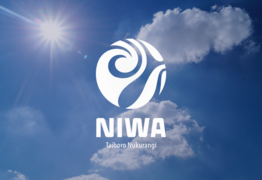Towns on high alert as water availability decreases
01 March 2024, 5:00 PM
 Falls Dam remains low. PHOTO: Supplied
Falls Dam remains low. PHOTO: SuppliedFalls Dam continues to sit just below 1 per cent capacity with light rain on Thursday across the district keeping it from being empty.
On Friday the Central Otago District Council decided to move Omakau, Ophir, Naseby and Ranfurly communities into the Red Drop water conservation status.
Low water level in Falls Dam is affecting the availability of water in the Manuherekia catchment, and as a result, the council has moved the towns into the highest conserve water setting.
The Otago Regional Council recently advised of near-drought conditions across much of the South Island and is cautioning Otago farmers, along with rural and urban communities to consider conserving water in the weeks ahead.
The Red Drop requires a total ban on sprinkler use but does allow for minimal handheld hose use with a trigger nozzle for garden watering only.
“We are reaching out to the community to do our part within the Manuherekia catchment,” Three Waters director Julie Muir said.
“As well as the sprinkler ban, we are asking the community to check how they can reduce their water use throughout our homes and business.”
Meanwhile, the taste and odour complaints about Omakau’s drinking water have been increasing, and has been found to be a naturally occurring chemical called Geosmin, which is produced during the breakdown of algae and other micro-organisms in the raw (untreated) source water.
“Geosmin has a distinct earthy or musty odour which most people can easily smell and causes most taste and odour outbreaks in drinking water. Seasonal increases in naturally occurring algae or bacteria in water can cause geosmin levels to increase above the tasting threshold,” Three Waters customer and compliance team leader Philippa Bain said.
Although the taste and odour can be unpleasant, it wasn’t harmful to health, the council said.
Given dropping river levels and hot conditions, laboratory testing for cyanobacteria was undertaken to ensure the safety of the water source.
Geosmin can be produced during the breakdown of algae and can be linked to a cyanobacteria event.

All lab samples have showed no levels of concern.
Unfortunately, due to the low river levels, taste and odour issues may continue until flows in the Manuherekia River increase again and temperatures drop.
Since this event, council has had contact with residents in the community who have noted that the severity of the taste and odour issue has fluctuated over the past two months.
“People within the community do have different levels of sensitivity to the taste and odour, some noticing it more than others,” Philippa said.
There had been concerns raised from the community about the safety of the water.
“When the Central Otago District Council receives a taste and odour complaint, we arrange for water sampling as soon as possible. We check for treatment plant operational issues or network issues. We also check all our routine monitoring information and water quality data.
“We acknowledge the frustration and discomfort related to the taste and odour issue, but want to assure the community that the water supply is being monitored closely. Any concerns that water is unsafe are taken very seriously and we will ensure the community are aware of any issues.”
See Watch the Drops table for your status. Click here for more info and advice on Water Conservation.
To stay updated go to the reports section on The Central App and click Water Notices






